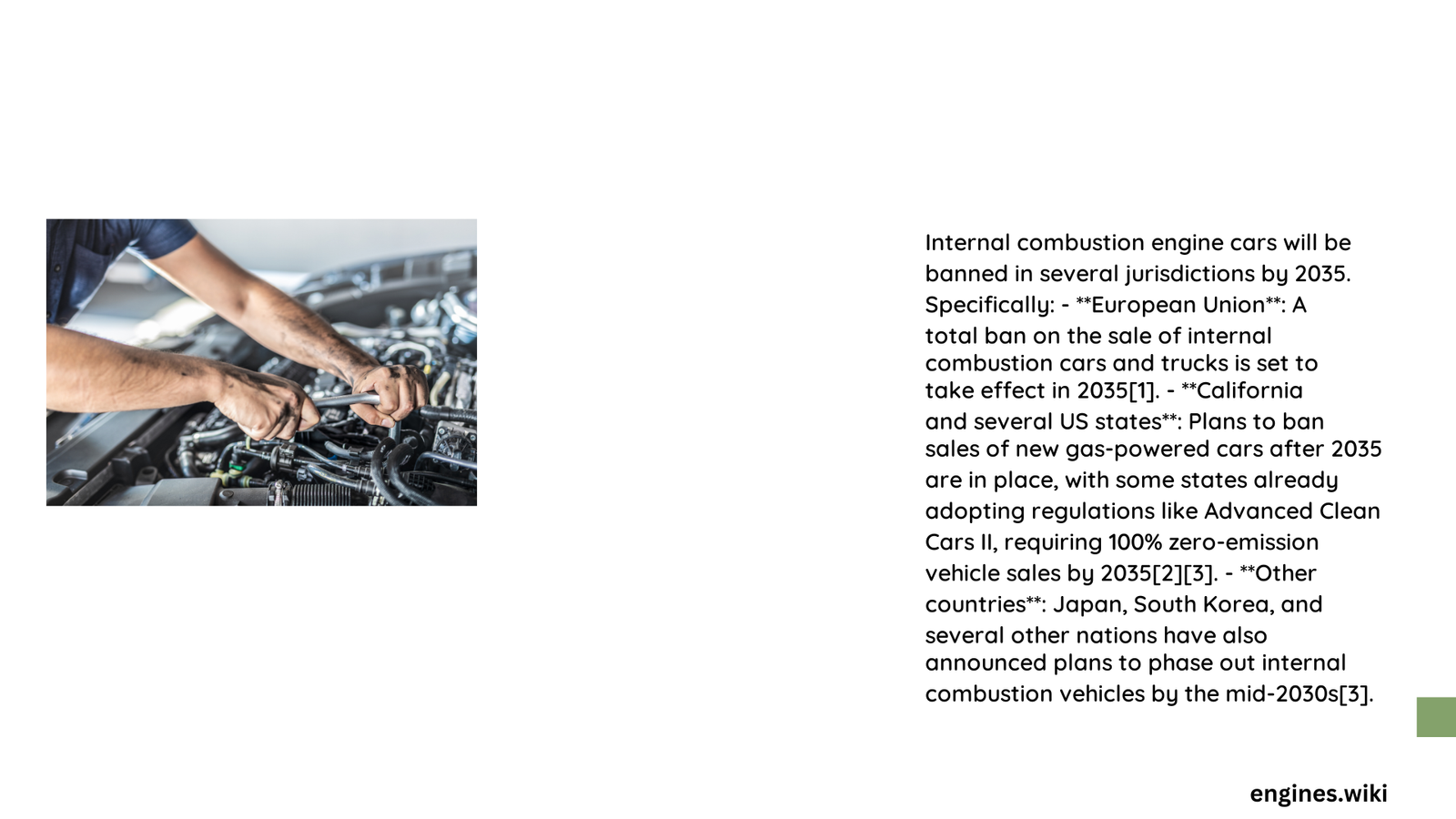The global automotive landscape is undergoing a transformative shift, with numerous countries establishing definitive timelines to phase out gasoline-powered vehicles. By 2035, most developed nations will implement comprehensive bans on new internal combustion engine car sales, driven by environmental concerns, technological advancements, and aggressive decarbonization strategies. This unprecedented transition represents a critical milestone in combating climate change and revolutionizing transportation infrastructure worldwide.
What Drives the Global Engine Car Ban?
Environmental Imperatives
The primary motivation behind engine car bans stems from urgent climate change mitigation efforts. Transportation sector emissions contribute approximately 29% of total global greenhouse gas emissions, making the transition to electric vehicles crucial for meeting international carbon reduction targets.
Key Factors Influencing the Transition
- Technological advancements in battery technology
- Decreasing electric vehicle production costs
- Government incentive programs
- Growing environmental awareness
Which Regions Lead the Electric Vehicle Revolution?

European Frontrunners
| Country | Ban Year | Specific Details |
|---|---|---|
| Norway | 2025 | Complete ban on fossil fuel vehicles |
| EU Countries | 2035 | Comprehensive ban on new gasoline car sales |
| United Kingdom | 2030-2040 | Phased approach with regional variations |
Asian Transformation
Countries like China, Japan, and South Korea are aggressively pursuing electric vehicle adoption:
- China: Targets 20% electric vehicle sales by 2025
- Japan: Plans to ban traditional gasoline cars in the 2030s
- South Korea: Targeting complete phase-out by 2035
North American Landscape
The United States demonstrates a state-by-state approach:
- California leads with a 2035 ban on new gasoline vehicles
- Washington State aims for 100% electric vehicle sales by 2030
- Several northeastern states follow California’s regulatory framework
What Challenges Exist in Implementing Engine Car Bans?
Infrastructure Limitations
- Insufficient charging station networks
- Grid capacity constraints
- High initial electric vehicle costs
Economic Considerations
The transition presents complex economic challenges:
– Potential job losses in traditional automotive manufacturing
– Required massive investments in electric vehicle infrastructure
– Retraining workforce for new technological paradigms
How Will the Transition Impact Consumers?
Expected Consumer Benefits
- Lower long-term vehicle maintenance costs
- Reduced environmental footprint
- Improved urban air quality
- Potential government incentives
Potential Short-Term Challenges
- Higher initial electric vehicle purchase prices
- Range anxiety
- Limited model variety
What Technologies Will Support the Transition?
Emerging Innovations
- Solid-state battery development
- Hydrogen fuel cell technology
- Advanced charging infrastructure
- Synthetic fuel alternatives
Conclusion: A Sustainable Automotive Future
The global engine car ban represents more than a technological shift—it’s a comprehensive reimagining of transportation. While challenges remain, the momentum towards electric vehicles appears irreversible.
Projected Timeline
- 2025-2030: Initial comprehensive bans in progressive countries
- 2035: Majority of developed nations implementing restrictions
- 2040-2050: Near-complete global transition expected
Reference:
– Statista Global Vehicle Phaseout Report
– WorldAtlas Country Specific Bans
– Coltura Global Phaseout Tracking
